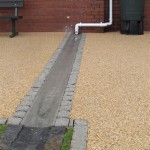How to Level a Paver Patio
Creating a beautiful and functional paver patio involves meticulous preparation, and leveling the base is a crucial step. A well-levelled base ensures stability, even drainage, and prevents uneven settling of pavers over time. This article will guide you through the process of leveling a paver patio, providing a comprehensive understanding of the steps involved.
1. Site Preparation and Excavation
Before beginning the leveling process, ensure the site is clear of debris, vegetation, and any obstructions. Mark the perimeter of the patio using stakes and string. Excavate the area to the desired depth, considering the thickness of the pavers, bedding sand, and gravel base. The recommended depth for a paver patio is typically 6-8 inches.
Once excavated, compact the soil thoroughly using a plate compactor or a hand tamper. This step is essential to create a stable and solid foundation for the patio. If the soil is very soft or unstable, consider adding a layer of compacted gravel for added support.
2. Laying a Gravel Base
After compacting the soil, spread a layer of gravel to create a base for the pavers. The gravel should be at least 2-4 inches deep, depending on the type of pavers and the desired level of drainage. Use a rake or a leveling tool to distribute the gravel evenly across the entire area, ensuring a consistent thickness.
Once the gravel base is in place, compact it thoroughly using a plate compactor or a hand tamper. This will create a solid and stable foundation for the pavers. Take care to compact the gravel in overlapping passes to ensure even compaction throughout the area.
3. Installing Bedding Sand
After compacting the gravel base, spread a layer of bedding sand over the entire area. The sand layer should be approximately ½ inch thick, providing a smooth and even surface for the pavers. Use a rake or a leveling tool to distribute the sand evenly, ensuring a consistent thickness across the entire patio.
To level the sand, use a long piece of 2x4 lumber as a straightedge. Lay the straightedge across the patio at various angles, checking for high and low spots. Use a shovel or a trowel to adjust the sand levels as needed, ensuring a perfectly level surface.
4. Installing Pavers and Compaction
Once the sand is level, begin installing the pavers, starting from a corner or a central point. Use a rubber mallet to gently tap the pavers into place, ensuring they are level with each other and with the surrounding area. Install the pavers in a pattern of your choice, ensuring proper spacing between each paver.
After installing the pavers, use a compactor to compact the sand beneath the pavers. This step is essential to ensure the pavers are securely in place and the patio is stable. Be careful not to damage the pavers while compacting the sand.
5. Final Adjustments and Edging
Once the pavers are compacted, fill any gaps between the pavers with polymeric sand. This type of sand helps prevent weeds and create a durable and stable surface. Sweep excess sand off the pavers and apply a sealant to protect the pavers and enhance their appearance.
Finally, install edging around the perimeter of the patio to create a neat and finished look. Edging also helps prevent the pavers from shifting or moving over time. Use edging materials that complement the style of the patio and the surrounding landscaping.

How To Prep Lay A Base For Pavers Western Interlock
.jpg?strip=all)
How To Install Patio Pavers Lv

Paver Installation Landscaping Network

Urban Landworks Blog

Leveling The Ground For Your Paver Patio Pavertime
Dammann S Garden Company Diy Series How To Install Level Pavers And Patio Stones
Dammann S Garden Company Diy Series How To Install Level Pavers And Patio Stones

What Kind Of Base Should You Use For Patio Pavers Installation

Raising And Leveling Sunken Patio Pavers Toolbox Divas

Paver Patios That Will Save You Time And Effort Family Handyman
Related Posts








